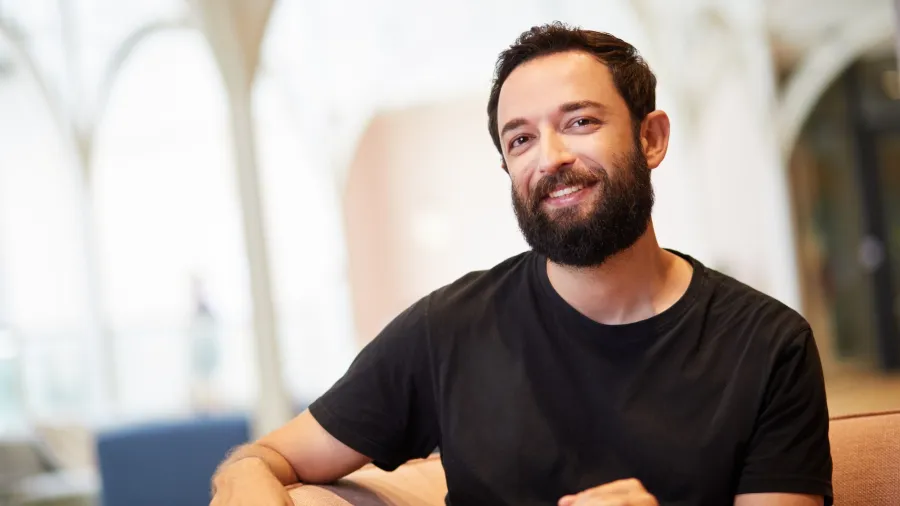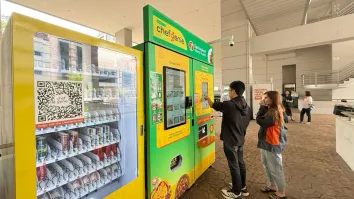
Customer-by-customer personalisation may be the future of delivery, foodpanda exec says
COO for APAC Pedram Assadi talks to QSR Media about his thoughts on delivery’s evolution and the next growth opportunities it sees with restaurant partners.
At some point, quick service restaurants’ delivery menus in Asia may look dramatically different than its dine-in counterparts as the channel continues to experience a boom due to the pandemic’s lingering effects.
“The items and [consumers’] taste buds that are working on delivery are different [from] the ones that work on dine-in. That's not the case yet if you look at many of the menus, but that also shows that we are very early in the stage. I believe that there will be more personalization,” foodpanda chief operating officer for Asia-Pacific Pedram Assadi told QSR Media.
Menu items, he expects, will even be conceptualised to reach different consumer segments, and, even down to the individual level.
“Providing every customer the same menu is not optimized,” he said. “By tweaking the items, the structure of the menu and personalizing customer by customer is what I believe will be the future of the digital delivery service.”
Assadi said the delivery platform, currently in 12 markets across the region, is working closely with QSRs to “optimise” their menus with data and analytics, or, in some occasions, assist in testing an idea. Across markets, trends show a preference to access local or localised cuisine - a long-standing and unsurprising trend in a diverse region.
“Previously, key chains had to spend millions and millions into R&D (research and development) testing, and then have to launch it everywhere as an LTO (limited time offer),” he said. “Now we have the opportunity to look zone by zone into the different consumer segments, not only what gets bought, but also what gets searched, what gets clicked on. And by that, define local solutions and items and redefine the menu and optimize it.”
Positioning as a omnichannel tech provider
Assadi’s thoughts come with expectations that foodpanda will continue its growth momentum this year. In 2020, the executive said the third-party platform tripled its orders year-on-year whilst their gross merchandise value more than doubled.
To do that, the firm has been positioning itself as a digital omnichannel technology partner for all its users, anticipating both restaurant-partners and consumers’ growing desire to interact with each other through different channels.
Aside from delivery, foodpanda is also working with partners who prefer to increase footfall in their restaurants by incentivising customers through their pick-up option. It is also currently trialling a dine-in option in select markets through its pandapro subscription model.
“We're in 12 countries. Some have very strict lockdowns and others are opening so we have to be agile. Our regional partners have to have a very local approach for each of the countries' situations.”
“We see that a lot of very active people are becoming pickup customers generally,” he added.
Towards virtual brand partnerships, retail channels
foodpanda is also in talks with “many” QSRs to experiment with creating virtual brands, with Assadi citing a team that is working hand in hand with the businesses to examine their direction, what they want to develop and support with data “to ensure the things that they want to develop are actually demanded by the consumers.”
He also said the company remains proactive in encouraging chains to try out retail items via the brand’s pandamart arm, citing Nando’s signature Peri-Peri sauce as an example. Assadi also encouraged chains to try out meal kits as another potential revenue stream.
“That is another revenue channel for them so they're not only food on demand but also have stock and FMCG products that we can store in our warehouses, and that grows their revenue and bottom line.”
Growth opportunity seen in 360 campaigns
Assadi cited 360 marketing campaigns as the next great opportunity for brands, citing recent success with McDonald’s and its BTS meal, which led to seismic demand in some markets.
He also cited the company’s work with the fast food giant in Pakistan that led to its personal world record for the highest number of orders in a day.
“We see the total demand, the total traffic on the platform, and I think that can really unlock and unleash the opportunity of growth,” he said.
Looking ahead, Assadi said foodpanda intends to further penetrate more cities in the region, naming Japan as a focus area.
“We believe that's a very big market that's under-penetrated. We have a few countries that we'll constantly look [at] and study.”
“We're flexible in our approach. We want the technology to be provided to all our partners,” he concluded.




























